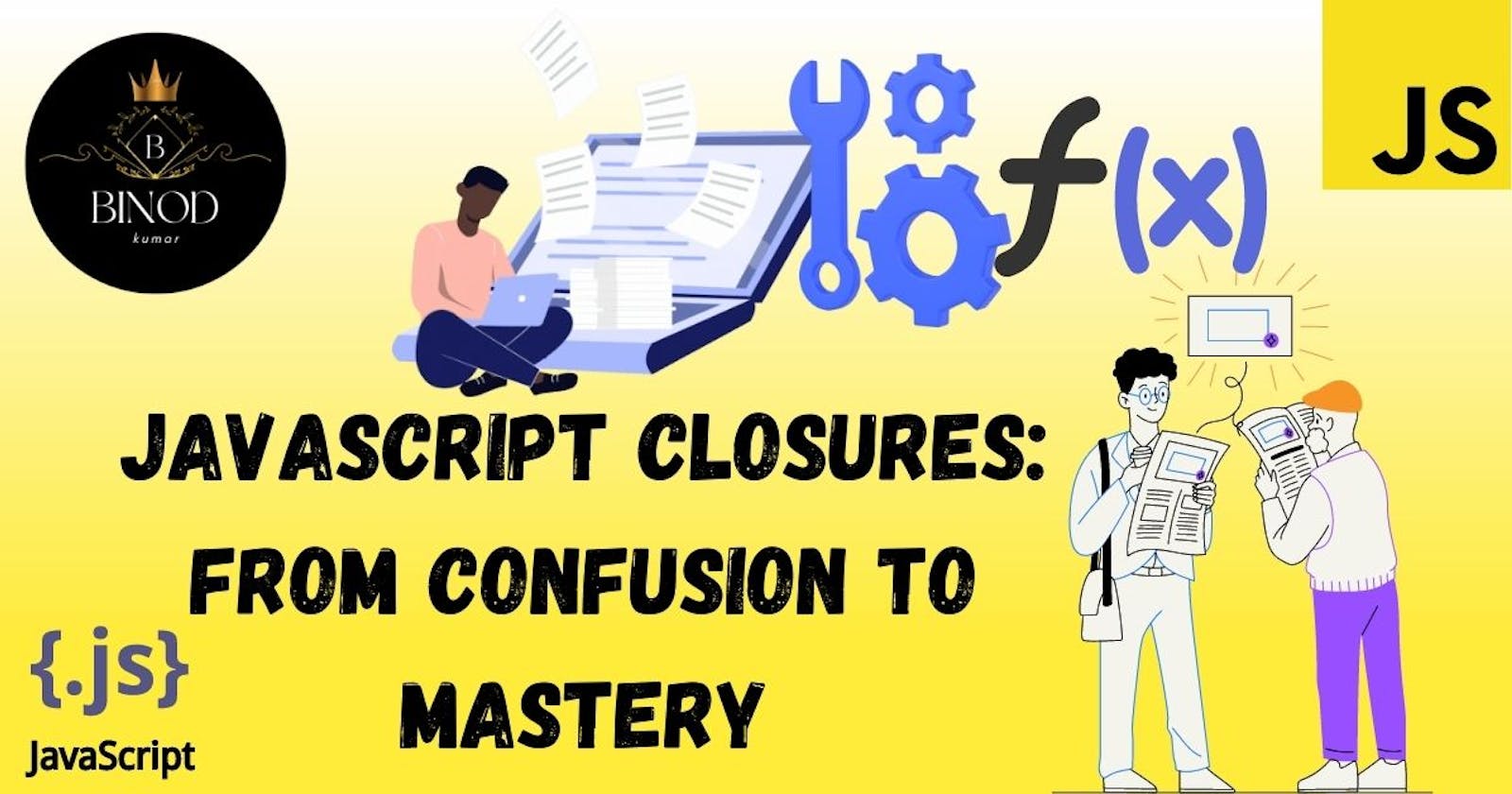JavaScript Closures: From Confusion🤯 to Mastery🧑🎓
Closing the Door on Confusion by Understanding and Utilizing Closures Capabilities in JavaScript
In this article, we will be introducing the concept of closures in JavaScript. We will cover what closures are, how they work, and some common use cases for them. Closures are an important concept in JavaScript, and understanding how they work can help you write more powerful and expressive code. We will also provide examples of closures in action, so you can see firsthand how they can be used to create more dynamic and flexible code. Whether you're a beginner or an experienced developer, this article will provide valuable insights into the world of closures.
What is a Closure?🤔
A closure is a function that has access to the variables in its parent scope, even after the parent function has completed execution. This allows the function to "remember" its initial state and continue to reference variables from its parent scope. Closures are created when a function is defined inside another function, and the inner function has access to variables in the outer function's scope. The term "lexical scoping" refers to this idea.
Closures are commonly used in JavaScript for a variety of purposes, such as:
Creating private variables: Closures can be used to create private variables that can only be accessed or modified through methods on an object returned by the outer function. This allows for encapsulation and information hiding in JavaScript.
Implementing callbacks: Closures can be used to pass a function as an argument to another function, and the inner function can then reference variables from the outer function's scope. This allows for more dynamic and flexible code.
Creating function factories: Closures can be used to create a function that generates other functions with specific behaviour. This allows for code reuse and more efficient use of memory.
Creating stateful functions: Closure can be used to create a function that maintains a piece of state, such as a counter, and can update and return the value of that state.
How do closures relate to lexical scoping?🤔
Closures and lexical scoping are related because closures rely on lexical scoping to access variables from the parent scope. The lexical scope determines the variable accessibility of closure, and the closure is able to "remember" the lexical scope in which it was created.
Closure Execution Context🤔
In JavaScript, a closure is a function that has access to the variables in its parent scope, even after the parent function has completed execution. The environment in which a closure is created is known as the closure's execution context.
The closure execution context includes all the variables that were in scope at the time the closure was created, along with any variables that are defined within the closure itself. These variables are stored in the closure's environment, which is a hidden link between the closure and the parent function's scope.
When the closure is invoked, it uses the variables from its environment rather than the values of the variables in the parent scope at the time of invocation. This allows the closure to maintain its state, even if the values of the variables in the parent scope change.
For example, consider the following code:
function multiple() {
let multiply2 = 2;
let increase = 0;
return function() {
increase = increase +1;
return multiply2*increase;
};
}
let multiplication = multiple();
console.log(multiplication()); // 2
console.log(multiplication()); // 4
console.log(multiplication()); // 6
console.log(multiplication()); // 8
Here, the multiple functions creates a closure that maintains the state of the increase and multiply2 variables. The closure execution context includes the increase and multiply2 variables, which are stored in the closure's environment and are used to maintain the state of the closure.
It's also worth noting that the closure execution context also contains the scope chain of the closure. The scope chain is a linked list of all the scopes that are in effect for a function at the time it's called. This chain starts with the function's own scope and goes up the scope chain, including all parent scopes until it reaches the global scope
Conclusion📃
In conclusion, closures are functions that have access to the variables in their parent scope even after the parent function has completed execution. This allows the function to "remember" its initial state and continue to reference variables from its parent scope. Closures are created when a function is defined inside another function, and lexical scoping determines the variable accessibility of a closure. The closure execution context is the environment in which a closure is created and includes all the variables that were in scope at the time the closure was created, along with any variables that are defined within the closure itself. These variables are stored in the closure's environment, which is a hidden link between the closure and the parent function's scope. Understanding closures can help in creating more powerful and expressive code in JavaScript by allowing for encapsulation, information hiding, dynamic and flexible code, code reuse, and efficient use of memory.
